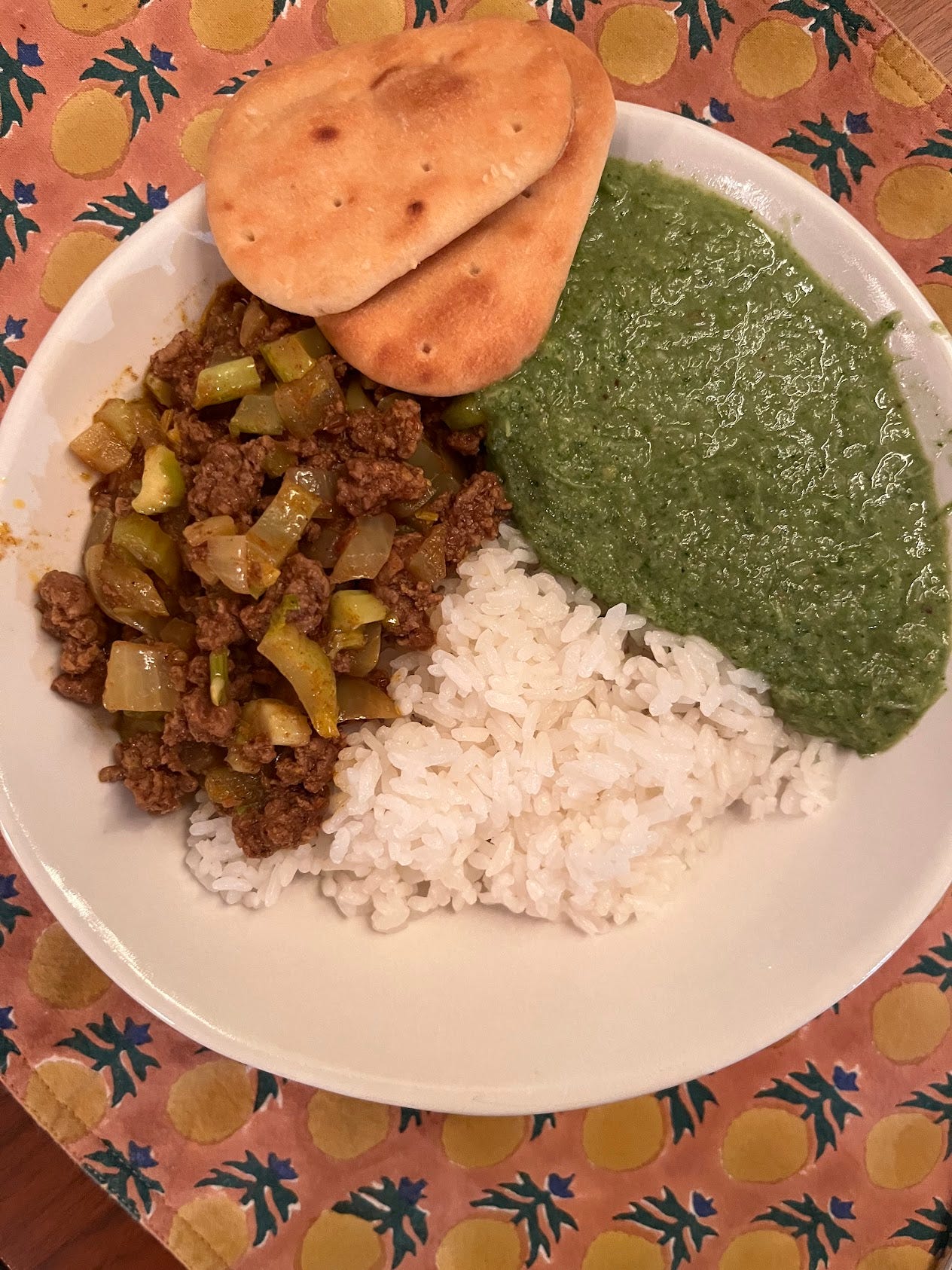When I first started this newsletter, I set out to build a practice of regular writing and research on a topic that felt relevant to my career and my interests. This practice has since expanded into a community of readers, but it’s also given me both the knowledge and confidence to start speaking with others about Food as Medicine.
This month, that work paid off. A few weeks ago I taught my first guest lecture at NYU on Food as Medicine to a group of public health master’s students. It was my first time teaching on this topic and in this format, and was a bit of a test of whether I can hack it as an educator and advocate for food as medicine outside of this newsletter. I’m really proud of how much work I put into my presentation, and even happier that the students engaged with my material and learned something new. I feel confident saying that it went pretty well, though you can judge for yourself. Below are two videos containing the whole of my lecture. It runs about 90 minutes long; I hope you’ll check it out!
This lecture was a chance for me to draw on my existing knowledge as well as that of the many folks whose work has supported me through my learning. It also served as a way to crystalize some of the topics I want to focus on in more depth in my capstone project, for which I’m developing a full-length course providing an introduction and overview of Food as Medicine.
I feel strongly that as Food as Medicine grows in recognition and practice in the U.S, there is a need for consciously developed and multidisciplinary classes that educate students on not only the ways food is used in healthcare settings, but the broader social and cultural components of food as medicine practice.
As the incredible Anjali Praseratong of Anti-Racist Dietician noted in a post earlier this year, there’s a lot of resources going into Food as Medicine right now because there’s a lot of money to be made in the field.
As resources pour into this field, we need to consider how we’re framing Food as Medicine for folks who are interested in building careers in this space. And I don’t just mean doctors, researchers, and public health practitioners. I mean community health advocates, nonprofit workers, gardeners, chefs, parents, and teachers. Food as Medicine needs to be a career that isn’t only reserved only for those with the resources to participate in secondary education.
There is great variety in the kinds of educational opportunities for students. Some of the more established institutions offering courses on this topic chose to focus on the healthcare applications of food as medicine. While this approach is deeply needed, it also leaves less space for conversations regarding the historical and cultural contexts that have shaped the current Food as Medicine movement, as well as the community-led food interventions and larger public health policies that are critical to long-term success.
I have yet to see a class that successfully considers not only the medical elements of Food as Medicine, but also the social and cultural aspects of food and our anthropological understanding of what food and medicine are. My course will aim to fill that gap by providing students with an overview of the field, providing them with a well-rounded understanding of the many factors that drive Food as Medicine forward, and giving them a strong foundation upon which to continue their own study should they desire to do so.
It’s been a lot of work to bring together the texts, videos, and sources that will form the foundation of my class, but it’s also been a real testament to how much I’ve learned, as well as how much the field still has to grow. I think now is actually the perfect time for a class like this; people are interested and curious about the topic, but there’s still enough newness in the field that students won’t yet become bogged down in how things have been; rather, they can dream of new ways things can be.
For those of you interested in expanding your learning or teaching others, there are some great free resources out there to get started, such as:
However, while these resources are fantastic, I think its’s also worth noting that they aren’t necessarily the foremost authorities on Food as Medicine, even if they style themselves that way. There are so many stories about Food as Medicine in practice that don’t make it to publication, anecdotal experiences and recipes that hold medicinal power in intangible ways. I continue to believe that these practices hold just as much value in our conversations of food and medicine as the shiny empirically-tested interventions.
Chef Jenny Dorsey has done a ton of incredible work democratizing her experiences in a master’s program at Harvard (check out her Food Politics lecture) and while I hope that my class will be accepted into a university catalog eventually, I also will continue to use this space to share findings, reading lists, and perhaps some additional videos.
I graduate from NYU next month, and with that milestone will come lots of changes I’m sure. But I’ll continue to be in this space, and I hope you’ll be here with me as well, learning and growing together.
Reading
I picked up an amazing book from NYU’s library called Eating and Healing, edited by Andrea Pieroni and Lisa Leimar Price. It contains a collection of essays and research spanning history and location on the medicinal uses for food. Chapters focus on digestive beverages in Northern Spain, medicinal herb quality in the U.S., wild plant foods in Patagonia, and food medicine in Morocco. It’s been a goldmine of information and research. Published in 2006, it’s a bit outdated but I still recommend it for anyone interested in learning more about some of the less well-known applications of food as medicine.
Cooking
Spring is here!! I haven’t had much time or energy to cook these days as we settle into our new home, but I did find the time to forage some gorgeous early spring greens on a rainy morning walk. Garlic mustard and onion grass are both invasive plants that taste delicious this time of year. I blanched and blended them into the most aromatic saag I’ve ever made, served with rice, mini naan, and some lamb, celery, and onion curry. It was a wonderful and nourishing meal.






